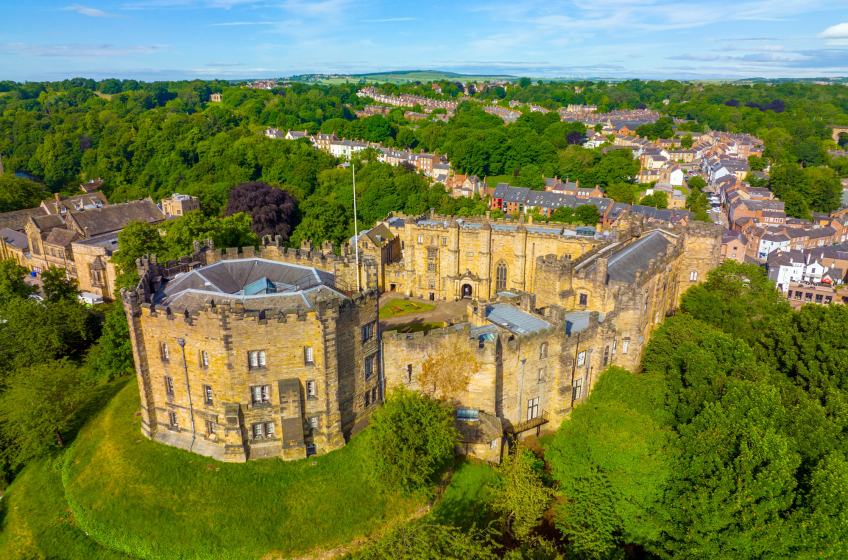Discover Durham Castle | A Visitor's Introduction to Durham Castle
Durham Castle, a Norman fortress, dates back to 1072. It is now part of Durham University, housing students in a historic setting. This UNESCO World Heritage site showcases a blend of medieval architecture and vibrant student life.
Durham Castle Visitor Information
Recommended Durham Accommodation: Hotels Bed & Breakfasts Pub Accommodation
History and Architecture
Durham Castle, a UNESCO World Heritage Site along with Durham Cathedral, stands as a testament to Norman military architecture and the rich history of Northern England. Constructed in 1072 under the orders of William the Conqueror, the castle was initially designed to fortify the area against invasions and establish Norman control. Over the centuries, it evolved from a military fortress to a palatial residence for the Bishops of Durham.
The castle's architecture is a blend of Norman, Gothic, and Renaissance styles, reflecting its long history and various phases of construction and renovation. Key features include the Norman Chapel, dating back to 1080, the Great Hall, and the Tunstall Gallery. The Great Hall, one of the largest in Britain, showcases grand medieval banquets and other significant events in its history.
University College, Durham
Since 1837, Durham Castle has been home to University College, Durham, the founding college of Durham University. The integration of the university within the castle's walls adds a unique dimension, merging historical heritage with academic life. Students live and study in the castle, and the college community actively participates in preserving and celebrating its history.
Key Features
Visitors to Durham Castle can explore several notable areas:
The Norman Chapel: This intimate and atmospheric chapel, with its original stonework and unique carvings, is one of the oldest surviving parts of the castle.
The Great Hall: Used for formal dinners and university events, the hall's impressive medieval architecture is a highlight.
The Black Staircase: A striking example of early 17th-century craftsmanship, this grand wooden staircase is renowned for its intricate carvings.
The Tunstall Gallery: Named after Bishop Cuthbert Tunstall, this gallery displays portraits and artifacts related to the castle's and university's history.
Visitor Information
Durham Castle is open to visitors through guided tours only, as it remains a working part of the university. These tours provide insights into the castle's history, architecture, and current role within the university. Tours typically last around 45 minutes and include access to the key areas of the castle. It is advisable to book in advance, especially during peak tourist seasons and university term times when availability may be limited.
Accessibility and Facilities
The historical nature of Durham Castle presents certain challenges for accessibility. While efforts are made to accommodate all visitors, some areas may have limited access for those with mobility issues. There are steps and uneven surfaces throughout the castle. Visitors with specific accessibility needs are encouraged to contact the castle ahead of their visit to discuss arrangements.
There are no dining facilities within the castle itself, but Durham city centre, with its variety of cafes, restaurants, and pubs, is a short walk away. The castle does not have a dedicated gift shop; however, souvenirs related to Durham Castle and University College can be found in nearby shops.
Events
Regular university and college events, including formal dinners and student gatherings, add to the lively atmosphere of the castle. Special public events, such as open days and historical reenactments, are occasionally held. Check the Durham University website for up-to-date information on upcoming events and availability.
Getting There
Durham Castle is centrally located in Durham city, adjacent to Durham Cathedral. It is easily accessible by public transport, with Durham train station a short walk away. Regular train services connect Durham to major cities such as London, Edinburgh, and Newcastle. Bus services also link Durham to surrounding areas. For those driving, city centre parking is available, although spaces near the castle are limited.
Shortlist
- Your Shortlist is empty

